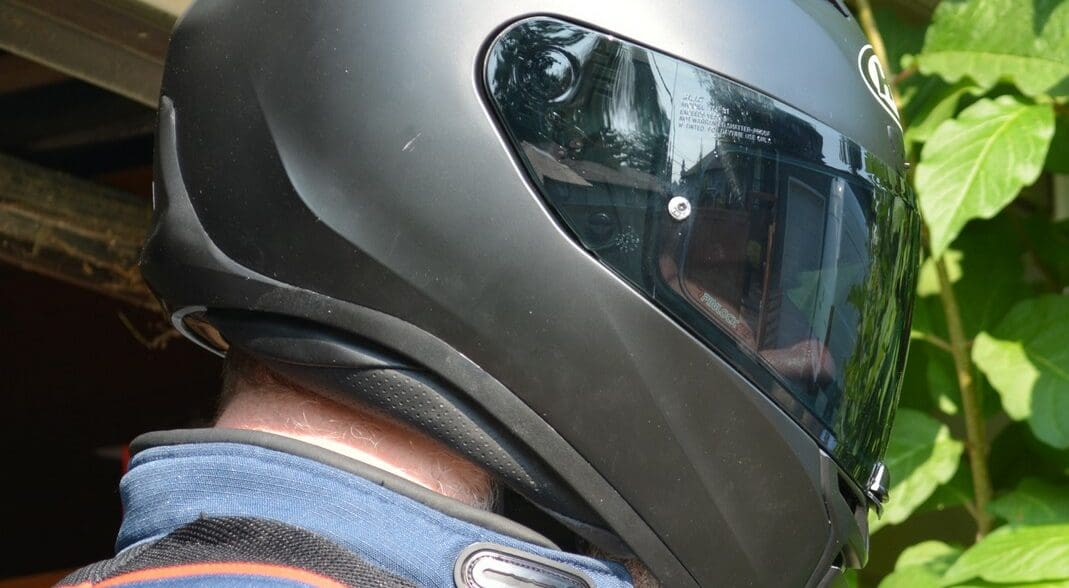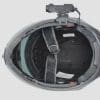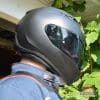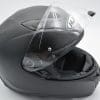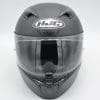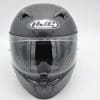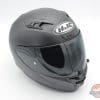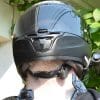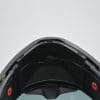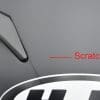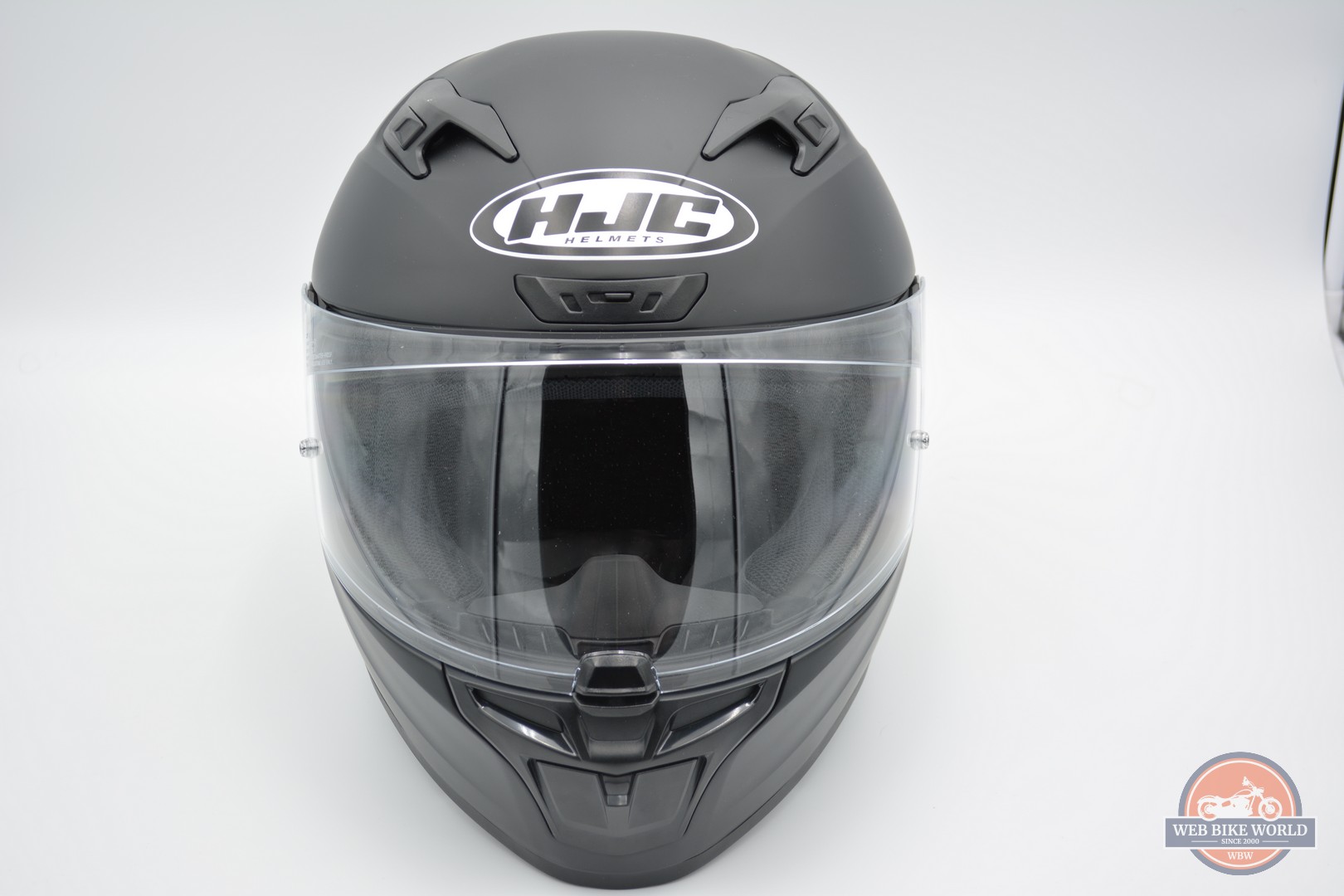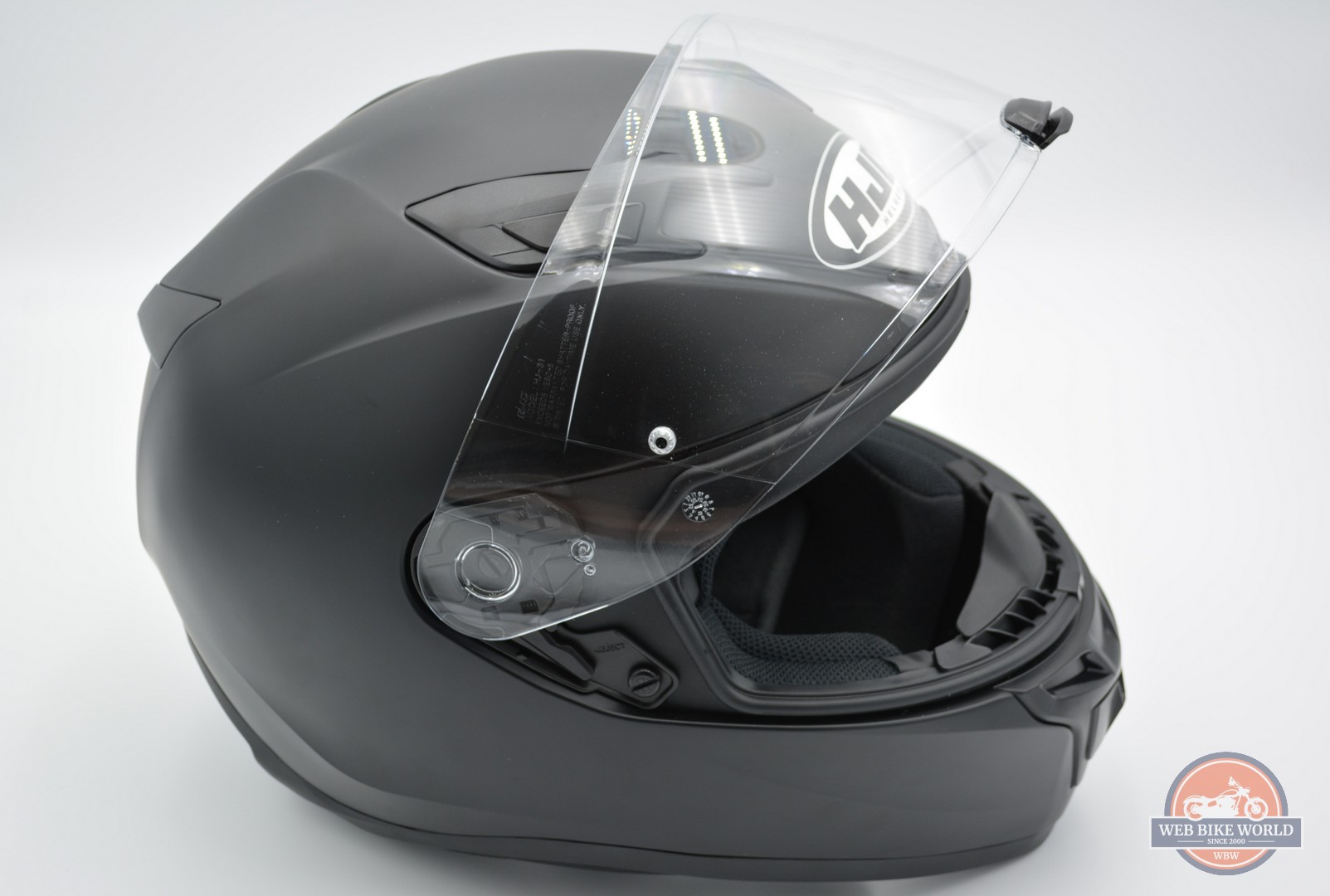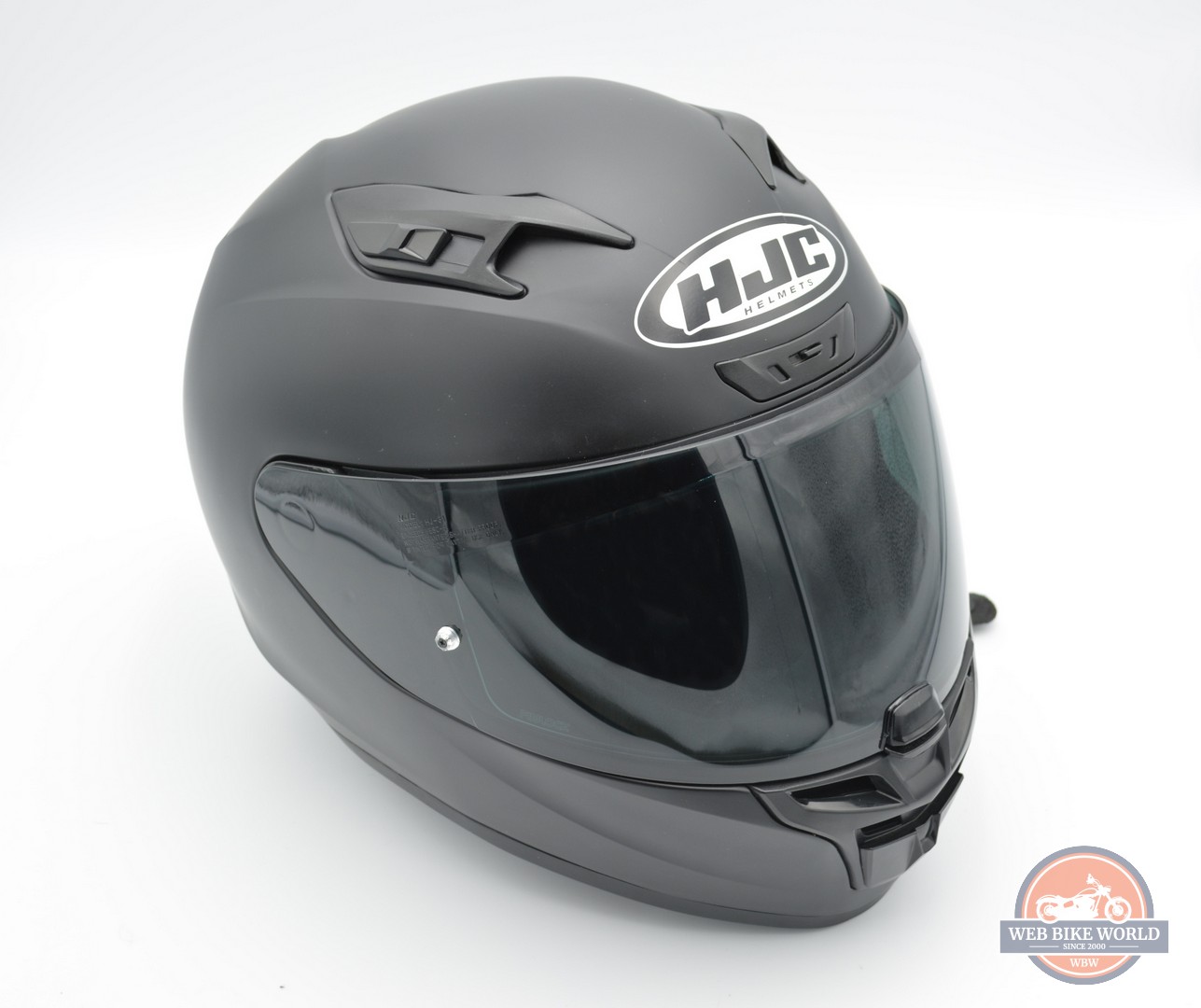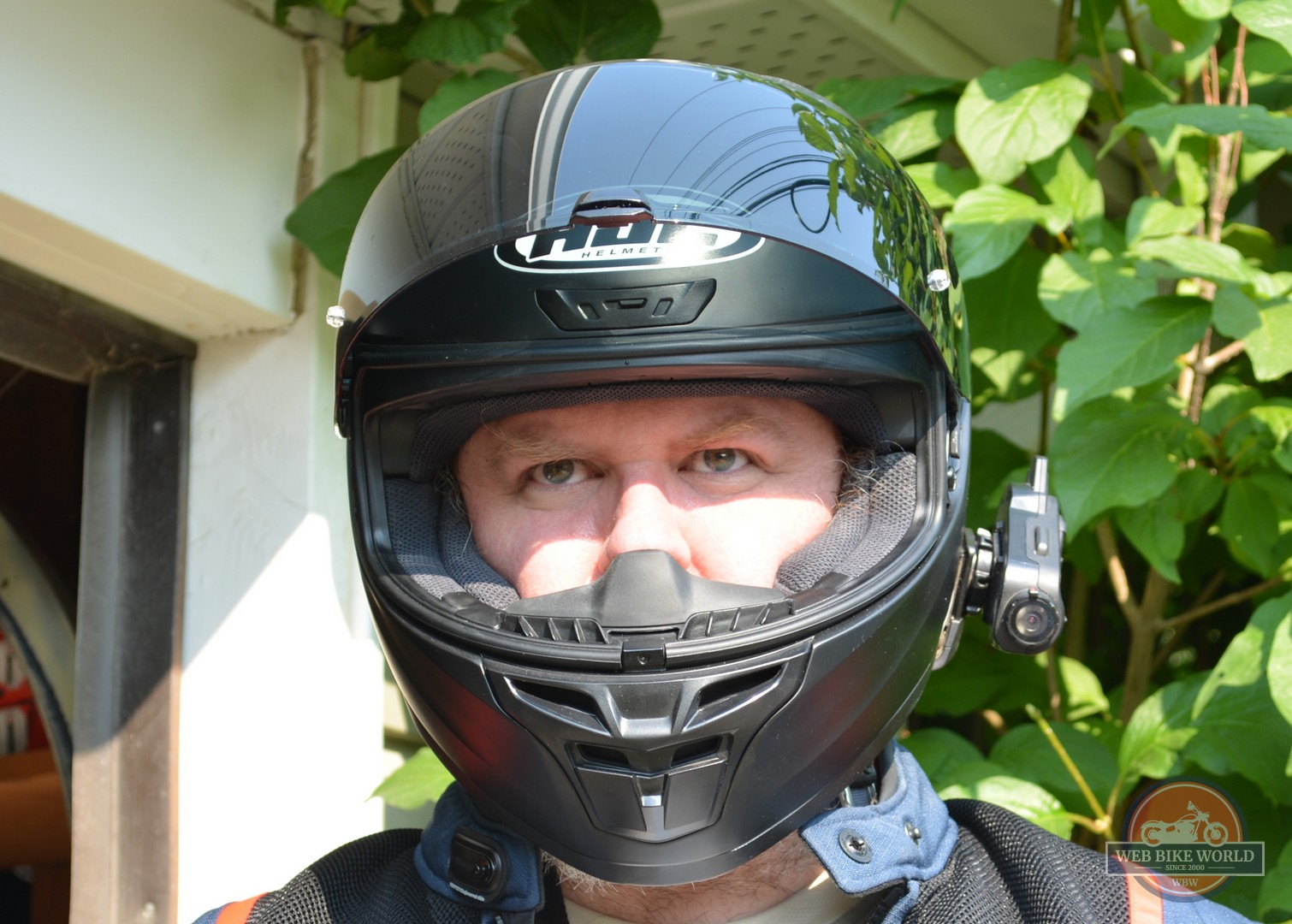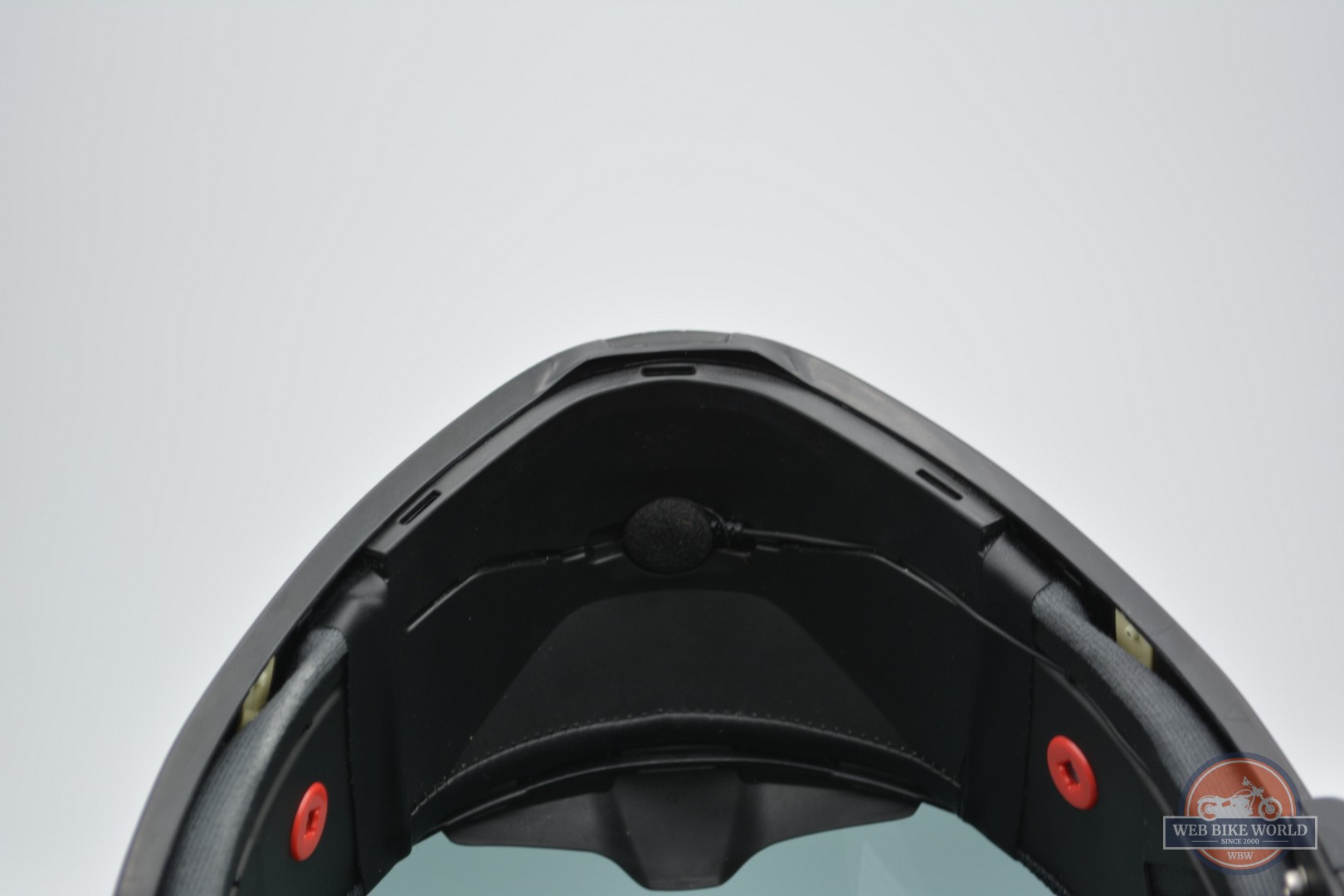While riding around in my Scorpion EXO-GT920 was perfectly fine from March through to May here in Calgary, Alberta, Canada, when June arrived this year, it arrived with hell on its heels. The temperature spiked hard, pushing through to over 30 C (86 F) almost every day of the month. Frankly, the GT920 no longer flowed enough air to effectively keep my head cool, so it was time to dive back into helmet shopping for my second lid.
Considering the heat, I went searching with a very specific mindset, that of high airflow mixed with high safety. As I already had the modular, it was time for me to look for a full-face helmet. I was also looking for something that either scored well in SHARP EU testing or was Snell M2015 or M2020 rated if possible. A fairly difficult task at first, mostly due to helmet shortages across the industry, I kept up my search until I found a listing at my local gear store for the HJC i10.
It looked very promising, being at an affordable price point, carrying a Snell M2020 rating for all but one shell size, having multiple ventilation options, and being made by a company that makes the high-scoring RPHA 11 Pro Carbon. At the time I went to purchase the helmet, they only had an L and a 3XL in stock. While the 3XL does not carry the Snell rating, it is the exact same style of shell and lining, and so I was happy, after a test fit, to part with my money in return for my second helmet!
About HJC
HJC Helmets has been around much longer than many people think, having been incorporated in 1971 in sunny California. All research, design, development, and prototyping are done in-house at HJC America, where the headquarters is equipped with its own wind tunnel, as well as on-site carbon fiber, fiberglass, and polycarbonate manufacturing capabilities. This allows all evolutions of designs to be signed off on Friday, and have a helmet ready for the wind tunnel Monday.
HJC expanded rapidly throughout the 20th century. Apart from the California headquarters, there are the two manufacturing sites in Seoul, Korea, and Vinh Phuc, Vietnam, the Asian market headquarters in Korea, and the European market headquarters in Reichstett, France. It is also through this expansion that HJC became involved in MotoGP, American Superbikes, World Superbikes, and other international Powersports events.
These days, the RPHA series of helmets, introduced as a street-going variant of the MotoGP RPHA-01R helmet, are often considered some of the best track helmets you can buy. What HJC excels at, however, is letting the knowledge, safety, and features of these higher-end helmets trickle down through their lineup so that both mid-range and entry-level budgets have at least one fully track-ready helmet.
About webBikeWorld’s Review Policy
This product was purchased by myself for this review, to add to my personal gear. Note that we do not allow brands to influence review scores or content. Please see our review policies for more information.
We here at webBikeWorld believe that you can’t just try something out once and give an honest opinion of it. Any product we test is actually used by our testers, and for the last half of June and the first half of July 2021, this was my primary helmet, with almost daily rides.
HJC i10 Features
Bike: 2012 Kawasaki Ninja 650
Without mincing words, the HJC i10 is placed to be a budget sports helmet. What this means is that it comes in a nondescript grey box with HJC emblazoned on the side, it comes with an instruction manual, a bog-standard thin helmet bag, and that’s really about it. It comes fitted with a clear visor that is pinlock compatible but does not come with a pinlock insert in the box.
When paying just under $160 USD for a helmet, I really wasn’t even expecting the finish to be all that great, and I was preparing myself for having to fuss and fiddle with the visor. Imagine my surprise, then, that while the helmet is made out of polycarbonate, the surface finish of the shell looks and feels excellent, all the vents open and close with really good, tactile clunks, and the visor has a central visor lock.
A fairly standard breath guard is also fitted into the helmet, which somehow manages to not touch my rather larger-than-most facial protrusion. This can be an annoyance in some helmets, as having had it broken a couple of times, it most certainly does not sit straight and most breath guards seem to prefer going up my nose instead of over it.
The visor detent system is very strong, and even at speeds of 60 MPH and above, if I needed to crack the visor open for some airflow, it didn’t shake, buffet or get whipped open from the air pressure. As well, when fully down, it has an easy-to-find central clamp lock, which can be operated without issue with gloves. Visor replacement is also ridiculously easy and fast, opening the visor to the fully up position, pulling on two spring-loaded tabs in the visor mechanism on the sides of the helmet to release the visor, and then just line up the new visor and give it a little push and it clicks in.
The big selling point with the i10, however, is that for all sizes except the 3XL (because the 3XL has not gone through lab testing yet), the helmet is fully Snell M2020 certified and approved. This feature alone is extremely important, as this is quite literally the least expensive helmet you can buy in 2021 that carries the Snell sticker on the back of the helmet, and that means… track days!
Being a fully approved helmet for use on race tracks, there is an entire catalog of accessories you can buy for it. Because this was my primary helmet, and because I wanted to not have to squeeze my sunglasses into the actual helmet, I bought two of those accessories, namely a dark smoke visor (HJ-31 visor, which is the same model used on the upmarket i70) and a pinlock insert for said visor.
HJC i10 Fit & Comfort
Being, for all intents and purposes, a racing helmet for the road, expectation and reality were close, in that the initial out-of-the-box fit of the i10 is rather tight. Expect your cheeks to resemble those of a chipmunk for the first week as the lining and pads settle, and even then, they are still quite tight on the cheeks and jaw. This tightness is in no way uncomfortable. In fact, I find it reassuring as it keeps the helmet solidly on my head, and while the pads have settled in and are now fitting just a tiny bit loose, that cheek squeeze is still there.
My head is a very strange “in-betweener” in terms of shape. I measure around the crown at 63.8 cm, or just about 25.1 inches, and have a long-intermediate oval shape. What complicates things is that I also have a pronounced cranial ridge, so finding a helmet that doesn’t give me a squeeze on the front of my forehead can be a challenge.
The HJC i10, however, doesn’t squeeze at all. The top liner is just thick enough to compress around my ridge without it touching the EPS foam, and the back of the head has just enough compression in the padding to be comfortable against the back of my head. The cheek pads give my face their usual hug, and my pronounced chin easily clears the chin bar without so much as thinking of touching it.
If I had to bring it down to a single sentence, I would say that the i10 starts off feeling a bit too tight, but give it a couple of days and it will fit like a dream. As well, HJC’s sizing chart is bang on, so no need to go up or down a size to find what fits your head.
I should also note that I recently went back to the gear store, and they have the 2XL i10 in stock, and I tried that on and was able to fit it without issue. As I am dead-on in between sizes, I could have gone either way had the 2XL been in stock when I bought the helmet.
HJC i10 Ventilation
I cannot, in all fairness, stay completely objective here. So I will get the biggest statement about the i10’s ventilation out of the way: This thing flows so much air! I was initially a little skeptical about the two top mount vents and the tiny little brow vent slider, thinking “these can’t really be that much better than the GT920, can they?” However, the first time I wore it and got North of 10 MPH, I had to check that my visor was fully shut with my clutch hand because I thought I had left it open!
In more objective terminology, the ventilation options provided on the i10 are amazing for the helmet’s price point. You have two independent top mount ram-air intakes, that are either open or closed. You have a small but extremely effective crown flow intake, that circulates air across your forehead and your temples before joining the top intake air to be pulled out the two exhaust ports. And you have an open or closed chin vent, which flows roughly half its air up into the visor area, and half to your lower face.
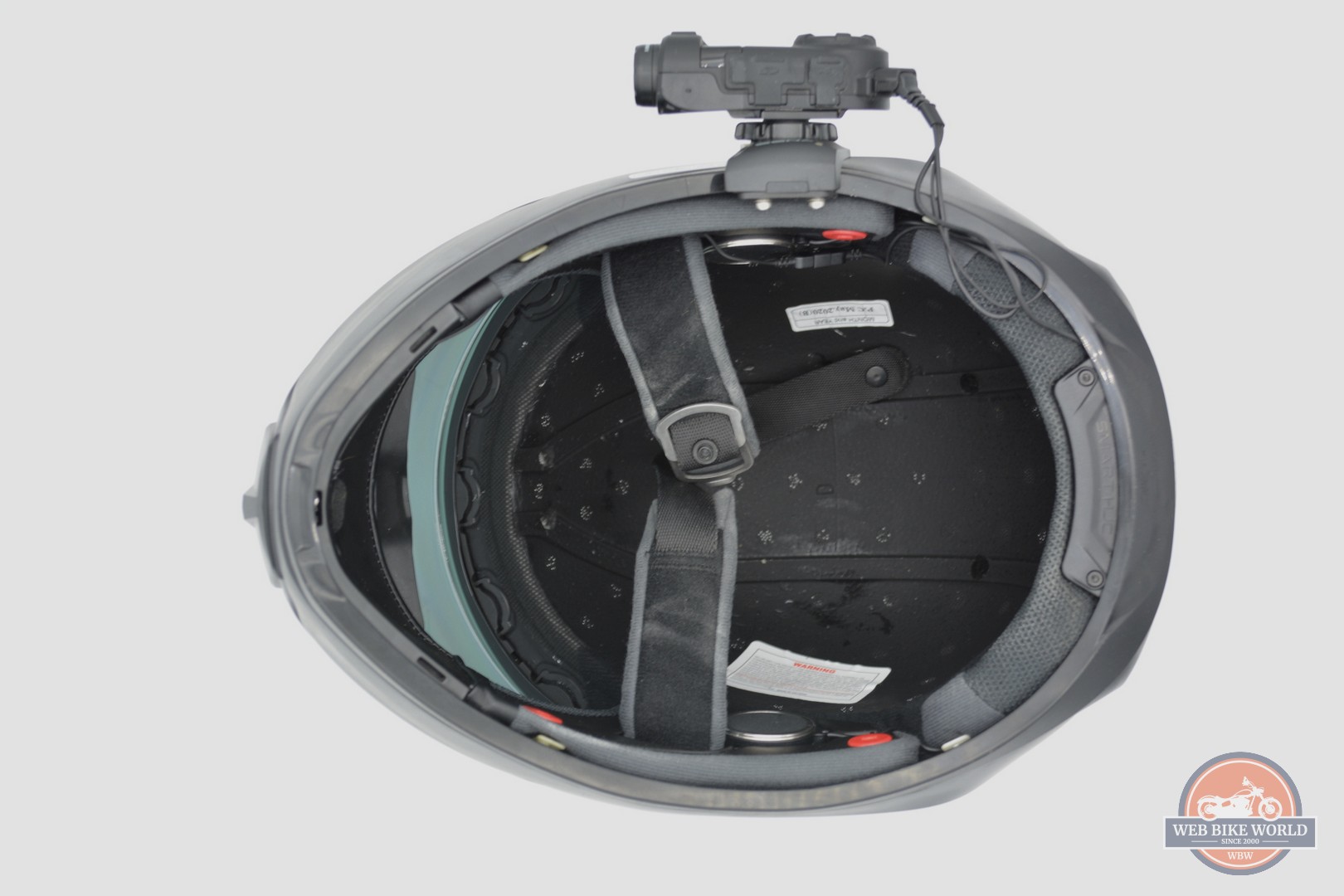
In the brutal heat of the end of June, where the temperatures were very nearly breaching 100 F some days, that ventilation was crucial in keeping cool. On test rides, which I limited to only an hour so that I didn’t sweat out too much and become dehydrated, I only ever had to crack the visor once, and only to the first detent, which gave about half an inch of airflow in through the base of the visor.
Otherwise, the standard ventilation was, in a word, excellent.
HJC i10 Visor Options & Visibility
I mentioned earlier that the HJC i10 is a fully track-ready helmet, and HJC themselves back that up with a slew of visor options. You can get every tint under the sun, including mirror tints. You can get racing visors that have a pinlock mount on the inside, and tear-off mounts on the outside. The variety of visors can aid in making you more visible to other road users, however, the helmet itself does not include any reflective areas or nighttime visibility patches, instead of relying on your other gear to provide reflective patches.
In terms of the view out, I cannot see the sides of the visor port in my peripheral vision if I look straight ahead. As the helmet puts my eyes at about the upper middle section of the visor, I get excellent downward visibility and moderately good upwards visibility. I did pull myself down into a tuck once while riding, and even with my chin bar a millimeter from my fuel tank, I could still see more than enough through the visor to safely ride without issue.
Unfortunately, we do not have a track here this summer to test out higher speed riding and track visibility, but next summer… I might update this article in a year…
HJC i10 Real-World Testing
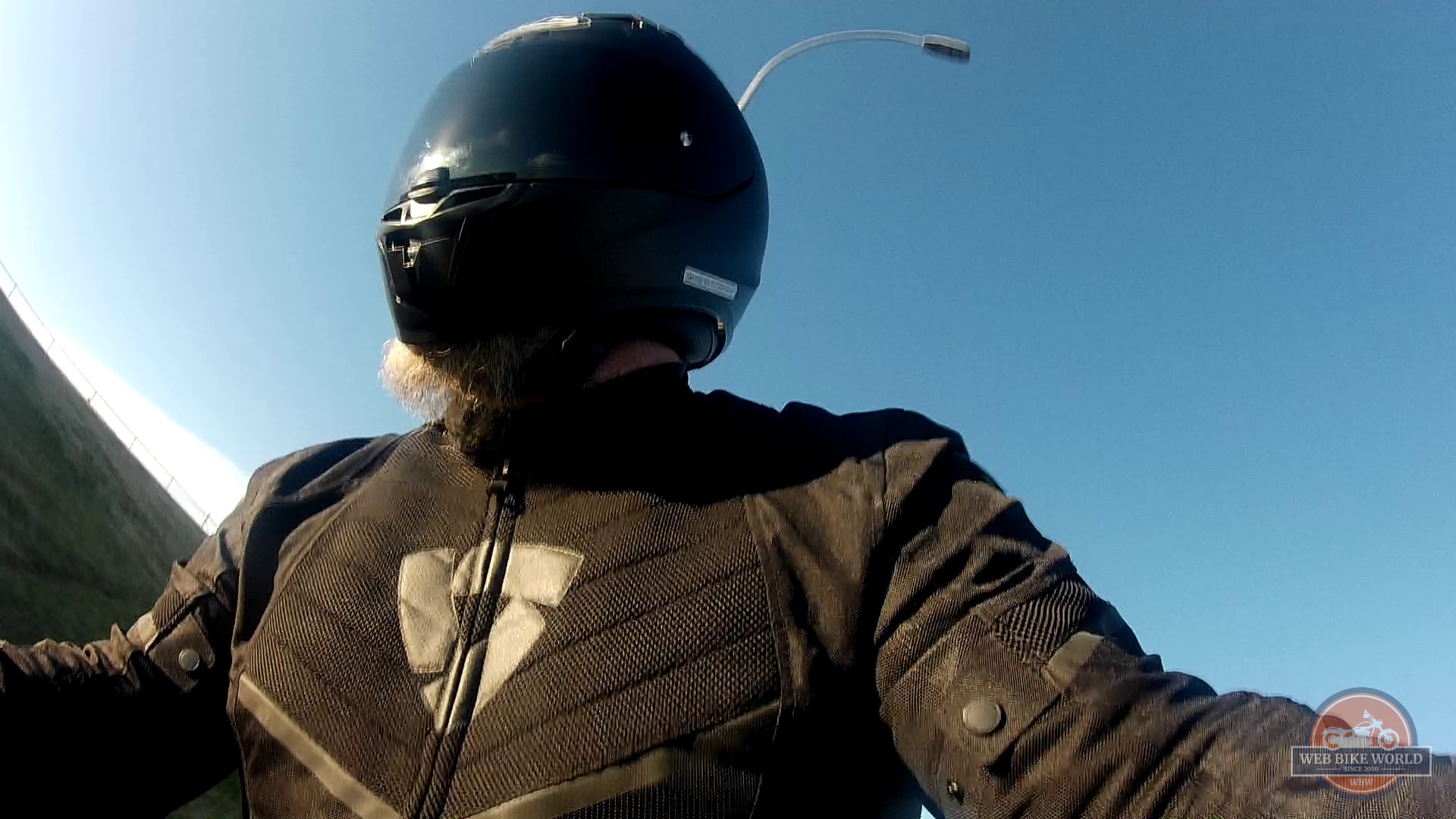
There is talking through the fit, the visibility, the ventilation, and the whole process of discovering all the neat things about the HJC i10, and then there is actually using the thing for a full month in brutally hot weather! This was followed by extremely humid weather after a couple of massive thunderstorms, and then a return to brutally hot weather. In other words, this helmet took the weather equivalent of an in-his-prime Mike Tyson uppercut, shook its head for a second to clear the stars, then got back into the fight.
At first, as noted in the fit and comfort section, the helmet felt a bit tight the first couple of days, but the liner and padding quickly settled in and it is now, to be honest, bordering on being a millimeter too loose. It still stays put and moves with my head, not independent of it, even with the liner and padding absorbing what felt like 20 liters of sweat over June alone.
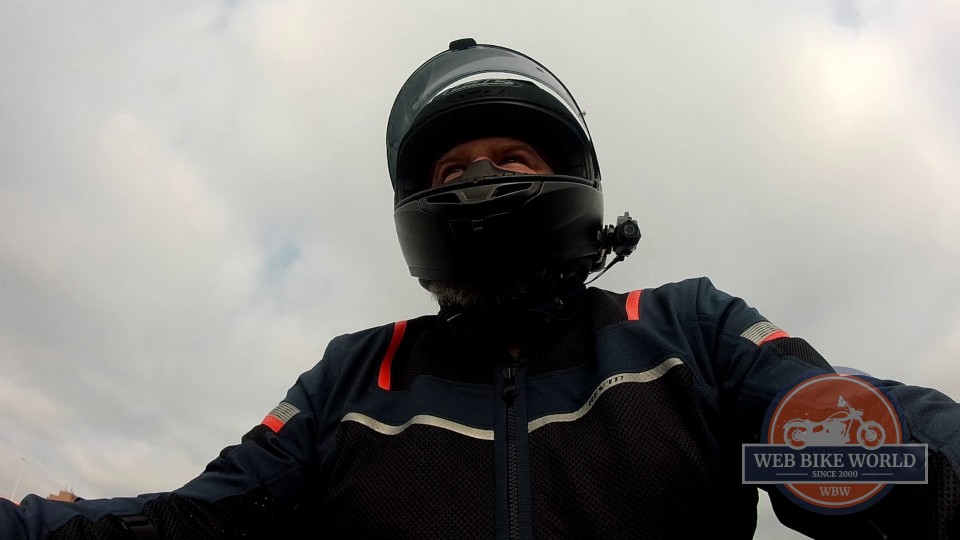
What surprised me there is that despite being completely soaked during the heatwave rides, and pulling the liners out to air dry after each ride, they never smelled. Through some scientific wizardry or just damned good design, the padding and liners evaporate the moisture much as a cooling shirt does. They are also machine washable (twice a week during the heatwave, once a week otherwise, and can be tumble dried on delicates with the heat turned down.
As well, the HJC i10 comes with indents in the EPS foam for the HJC/SENA comms system. I don’t have that particular comms unit, but I do have a SENA 10C Pro. The button mic from that kit fits perfectly into the helmet, and the earpiece indents fit the 10C Pro’s speakers without issue.
The biggest difference in my riding experience with the i10, however, came when I bought the HJ-31 Dark Smoke tinted visor and accompanying pinlock insert. With the clear visor, I had to wear sunglasses in the helmet or ride after the sun went down. The tinted visor, however, both eliminated the need for sunglasses and made things easier to pick out finer details around me.
I don’t know how else to describe it, but the pavement and the cars/trucks around me stood out way more and allowed me to stay much more 360-degree aware. Combined with the air flowing up from the chin vent and the pinlock insert, I also experienced no fogging at all, so my visibility was never impeded.
The only real disappointments I had with the HJC i10 come in the form of what I would consider to be nitpicks, but they exist, so I will cover them.
The first disappointment is that the chinstrap is only padded over the jaw. Even my bargain-bin price GT920 has a fully padded chin strap. This can lead, if you do it up too tightly, to a little bite into the front of your throat, and while it’s not painful, it is distracting. Just another inch of padding on either strap would have solved a problem that didn’t need to exist.
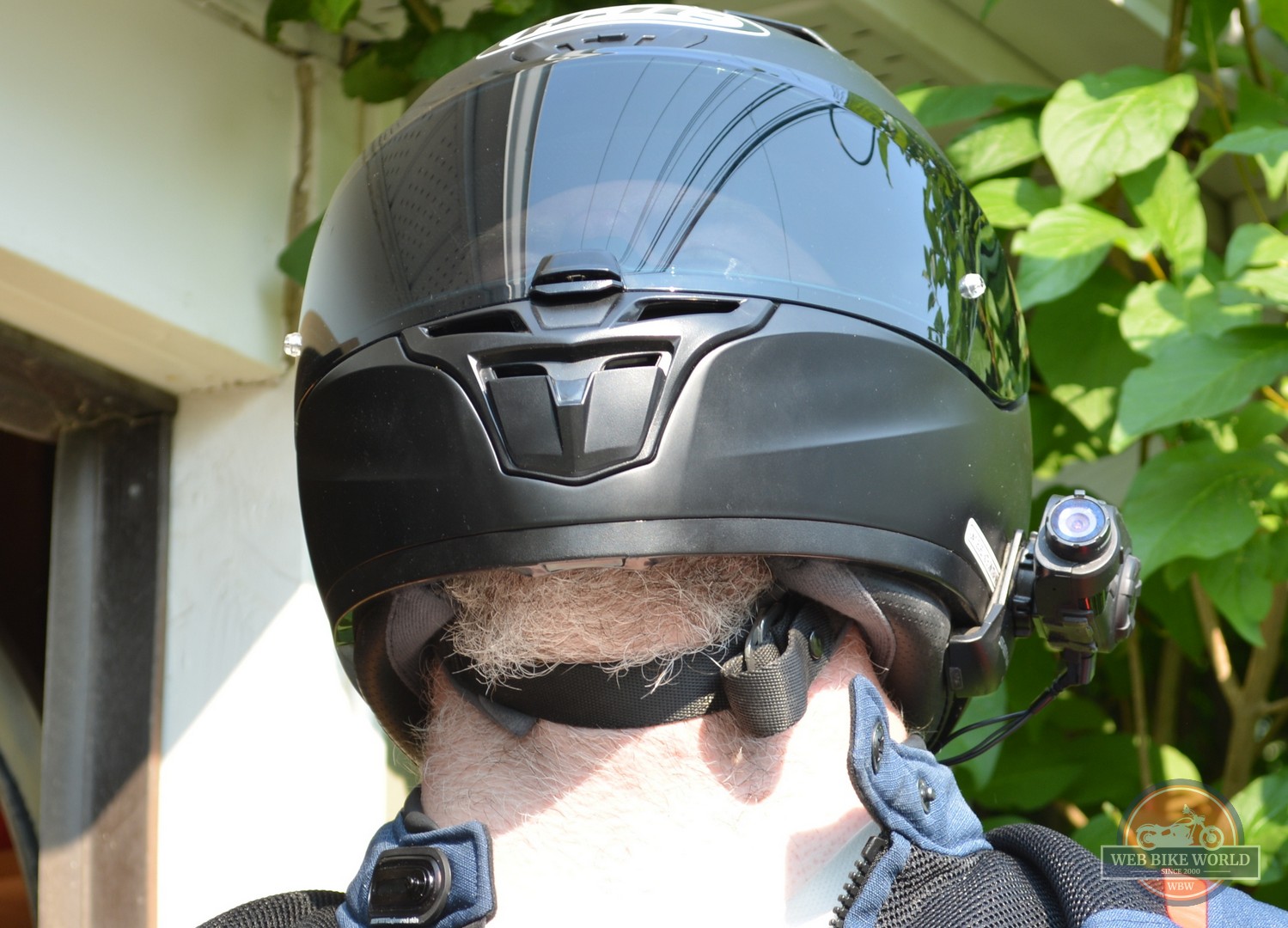


The only other disappointment is that the finish of the shell marks easily. On an out-of-city ride out towards the mountains, I took a rather large, very surprised, and then suddenly very flat bumblebee just above the HJC logo on the front of the helmet. It honestly sounded like I’d been shot. However, after I got to my first planned rest point, I took off my helmet, and lo and behold, there was a little scratch where Mr. Bee had transitioned from being a three-dimensional object to a two-dimensional one.
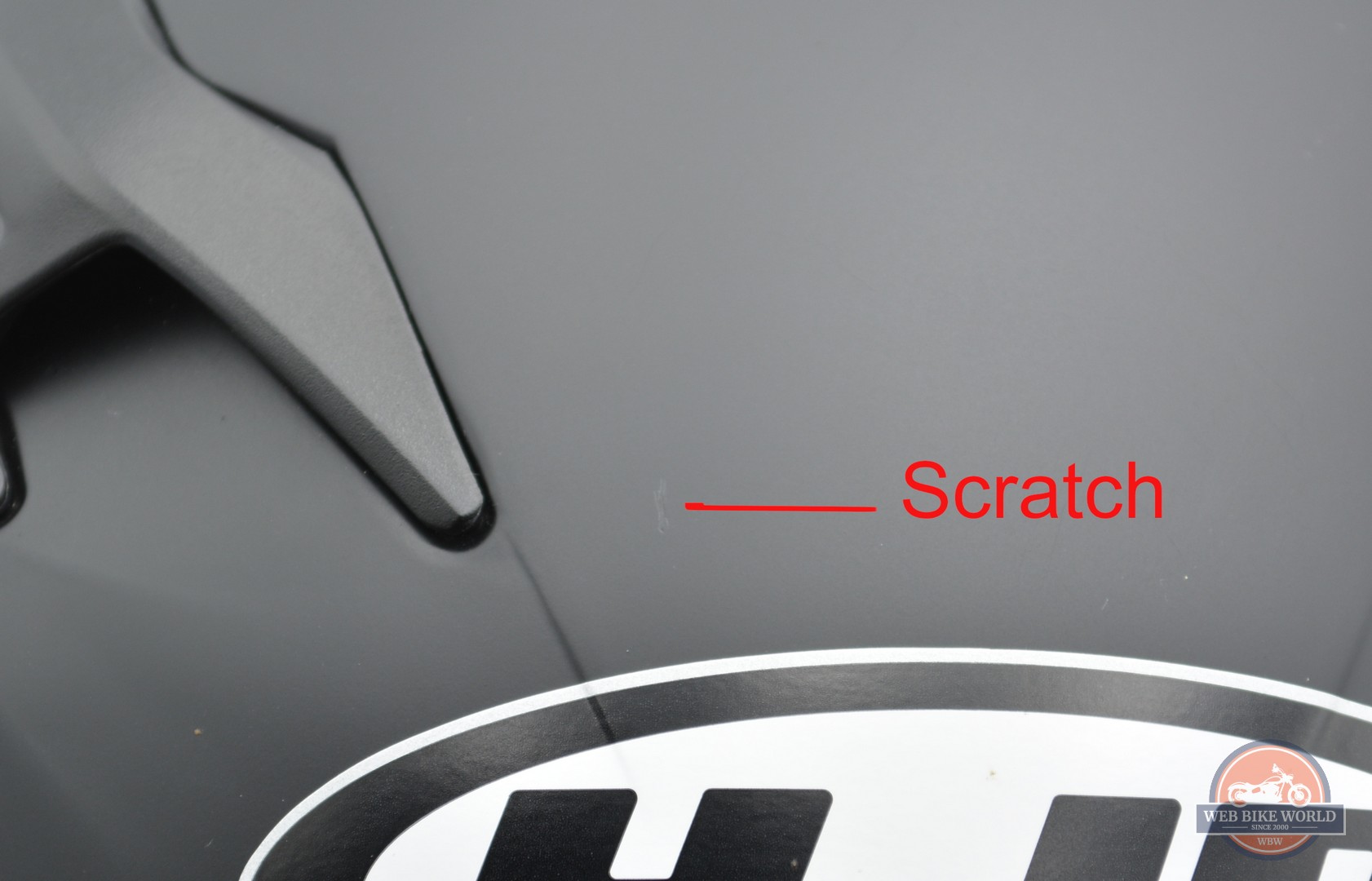


I was traveling at the speed limit of 62 MPH, and it was a great day for riding, but the impact was enough to scratch the finish. Maybe it was his tiny little briefcase as he went home from work, I’m not sure, but I wouldn’t expect something that goes squish and leaves a trail of his used-to-be-inside-his-bumbly-body-liquids to be solid enough to mark a helmet, but there you have it.
Final Thoughts: A Budget Helmet That Punches Way Above Its Price Point
As I started off saying, there’s no getting around the fact that the HJC i10 is, for all intents and purposes, a “cheap” helmet. However, through a multitude of riding conditions including stupidly hot, ridiculously humid, and shockingly windy, it proved to be anything but.
This is the little helmet that could. This is David standing his ground against the Goliaths of higher-priced helmets. Yes, it doesn’t come with any accessories apart from a 5 cent helmet bag and a two-page instruction manual. Yes, it is heavier than a fiberglass or carbon fiber helmet. Yes, it is priced just under $160 USD, but that, there, is the real joy of it.
From sizes XS to 2XL, you have a Snell M2020 rated track helmet. Let that sentence sink in, then go back and look at the under $160 USD price tag again. With the addition of just another $60 USD or so in accessories, if that, you can get a tinted visor and a pinlock insert to bring the helmet to full daytime track use capability. And even then, you’re still at only $220 USD for a Snell M2020 rated track helmet.
Despite the seeming cop out of not fully padding the strap, and the fact that if you look at the surface finish the wrong way it will develop a scratch, this is still going to become my go-to, everyday riding helmet for the rest of the season. I just need to make sure to steer clear of any vengeful bumblebee assassins hired to take me out…
Final Score: 4 out 5 (80%)
Pros
- Snell M2020 rated despite sub-$160 USD price
- Excellent sports fit
- Multiple accessories and visors to make the helmet perfect for your use
- Admirable and adjustable airflow
- Internal indents for SENA brand comms units
- No-smell liner despite absorbing a lot of sweat during the June heatwave
- Strong visor indents/stops
Cons
- The strap is not fully padded across its length
- The surface finish on the shell marks easily
- Most of what is included in many other helmet packaging require extra spending for the i10 (chin curtain, pinlock, etc)
Specs
- Manufacturer: HJC Helmets USA
- Price (When Tested): $159.00 USD
- Size tested: 3XL
- Made In: USA
- Alternative models & colors: Grey, Anthracite, Blue, White
- Sizes: XS to 3XL (3XL shell has not been Snell tested at publication time)
- Review Date: June & July 2021. Published July 22, 2021


